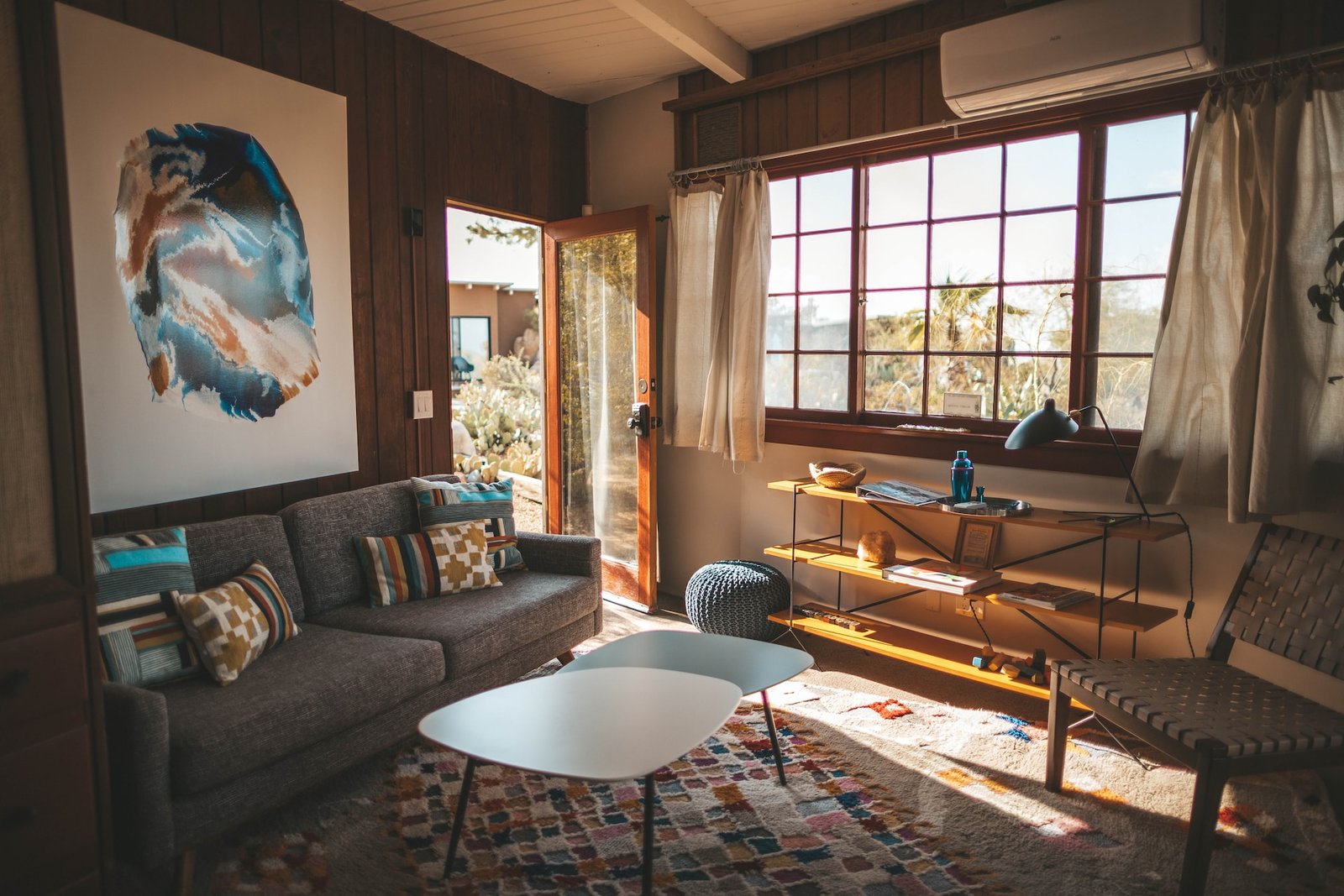
Your house may struggle with inadequate light, leading to spaces that feel cramped or gloomy. As a result, you may wish to incorporate natural light into your living room, or elsewhere. Studies have shown that this can improve mood, enhance productivity, and contribute to our overall health. This article explores some easy ways to maximize natural light in your home, turning even the darkest rooms into vibrant, lively spaces.
Use Light And Reflective Colors
The color scheme of your rooms plays a vital role in how light is absorbed or reflected. Lighter shades and reflective colors bounce natural light around the room (making it appear brighter and more spacious). Paint walls with soft shades like cream, pale blue, or light gray. These colors create a backdrop that reflects more light compared to darker tones.
Using glossy or semi-glossy paint can further enhance the reflection of light. Including reflective surfaces (like mirrors or metallic finishes) on furniture can amplify the effect, creating a bright and airy feel.
Choose Open Floor Plans and Use Plenty Of Glass
Open floor plans encourage natural light to flow freely through the home. By reducing the number of walls and barriers, light can reach further into your living spaces. If you’re planning a renovation, consider opening up areas to create more connected and naturally illuminated spaces. Where walls or partitions are unavoidable, use glass or other transparent materials. These can provide separation without blocking light. Specially designed interior glass doors or walls can preserve privacy. At the same time, they still allow light to permeate, enhancing the overall brightness of your home.
Conservatories are ideal structures for using glass windows to provide maximum natural light. If you want a warm roof conservatory, specialist websites can supply case studies and discuss insulation. They can also tell you whether a glass roof can make a conservatory warmer. Help can be received with building one yourself, as well as information regarding the shape and design.
Optimize Window Treatments
Windows are the chief source of natural light in most rooms. As a result, how you dress them has a profound impact on the amount of sunlight that enters. Heavy, dark curtains may provide privacy, but they can also severely restrict light. In this scenario, you should consider switching to lighter and more transparent fabrics. Two ideal options are linen and sheer cotton. These will allow the sunlight to filter through, while maintaining privacy (e.g. while you’re dressing or undressing).
You could also consider installing blinds or shades. These can be easily adjusted to control the light flow in any room. You should also remove any obstacles near the windows. These could include large furniture pieces that hinder the sunlight from streaming in.
Incorporate Mirrors And Shiny Surfaces
These elements can act as light multipliers in your home. You should strategically place mirrors opposite windows or in dark corners. In turn, they’ll reflect and spread natural light throughout the room. Mirrors can also make small rooms appear larger than they are. Also, a large wall mirror can almost double the perceived amount of sunlight.
You should additionally feature shiny or glossy surfaces on furniture, fixtures, or flooring. These can all create reflections that brighten up your space. These reflective elements can provide visual interest and contribute to a lively, illuminated ambiance.

Invest In Skylights Or Sun Tunnels
These can be a (literally) brilliant solution for areas where windows aren’t enough or for rooms without access to exterior walls. Skylights are windows installed on the roof, providing direct access to sunlight. Sun tunnels are reflective tubes that channel light from the roof into the room below.
Both options provide a strong, natural light source. They can transform even the darkest spaces into well-lit, inviting areas. It’s wise to do plenty of research beforehand and to consult with a professional. They’ll understand the best options and installation procedures for your specific home.
Maintain Clean Windows And Outdoor Areas
Regular maintenance is key to maximizing natural light. Clean windows allow more sunlight to enter – and provide clear, unobstructed views. You should regularly wash your windows and remove any dust or grime. This will have an immediate impact on the brightness of each room. If you’re too busy or aren’t confident working at heights, etc., it’s worth paying a professional to regularly do the work. They’ll have the right tools and materials to successfully clean your windows.
Additionally, pay attention to your outdoor areas. Any overgrown trees or shrubs near your windows may be blocking precious sunlight. Regular pruning and landscape maintenance ensure that light reaches your windows. In turn, this contributes to a brighter interior. Also, removing such obstructions can help prevent pests from gaining access to your home. If you need help with your backyard and garden, consult a professional who can advise you. If required, they can also complete the work.
Utilize Transparent Or Light-Colored Furniture
Furniture choices can also contribute to how light travels through a room. Bulky, dark furniture can absorb light and create shadows. This is why it’s worth opting for transparent materials like glass or acrylic in tables or chairs.
Alternatively, choose furniture with light-colored upholstery, to keep the room feeling open and bright. These selections allow light to pass through and reflect around the room. This can minimize obstructions and enhance the overall illumination.
Incorporate Strategic Lighting
While our focus is on natural light, strategic artificial lighting can complement and enhance the brightness of your rooms. Use LED or other bright, energy-efficient lighting options in layered configurations.
Combine overhead lighting with task and accent lighting to create a dynamic and well-lit space. Use bulbs that mimic natural daylight to make the transition between natural and artificial light seamless. This will provide consistent illumination throughout the day and night.
As you can see, maximizing natural light in your home doesn’t always require major renovations or significant expenses. By embracing these easy suggestions, you can enhance the aesthetics of your home, and contribute positively to your well-being and lifestyle. In turn, you’ll enjoy spending time indoors, whether you’re working, socializing, or relaxing.




